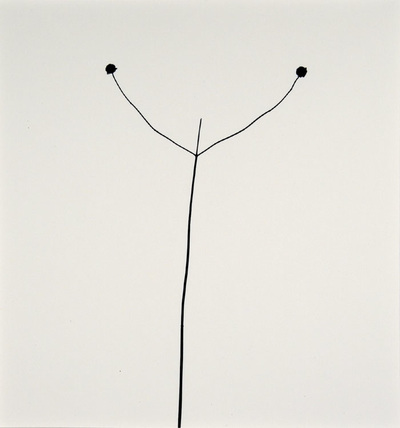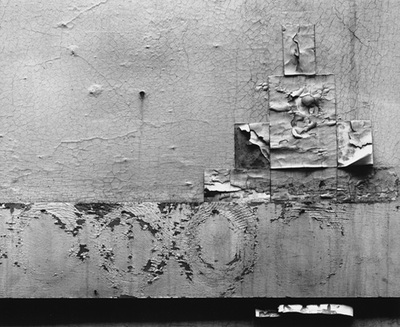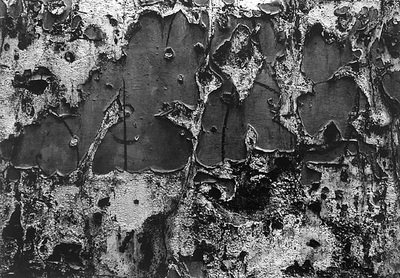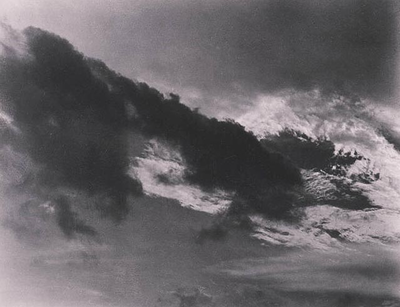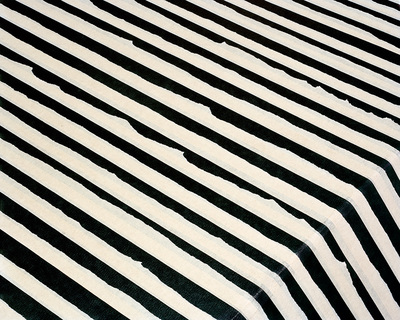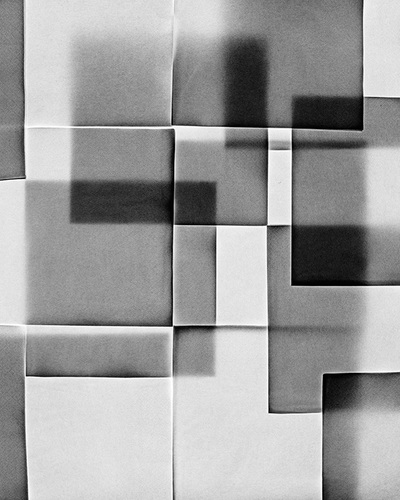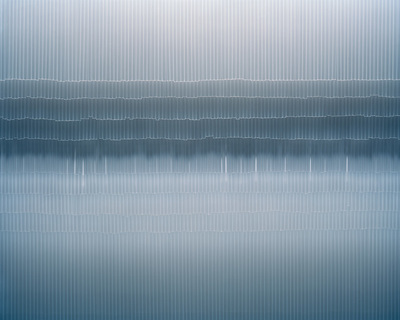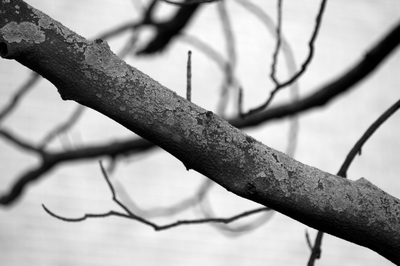KS3/4 lesson plan:
Exploring the formal elements in photography with Harry Callahan, Jaromir Funke, Aaron Siskind, Nick Albertson and others
From Jon Nicholls, Thomas Tallis School
All good art is abstract in its structure.
-- Paul Strand
I have used this stimulus with Year 10 students as a way of developing their ability to understand the formal qualities of photography and to promote their inventiveness and creativity. Some people argue that all works of art are abstractions because they are representations of life rather than real life. Most people would agree that abstraction is a kind of sliding scale with naturalism on the one end and total non-representation at the other.
This project is about how the camera can draw attention to the formal elements of art in order to create images in which the subject isn't the most interesting element. I am interested in helping students to develop the ability to 'see' a potentially great photograph in the mind's eye, as well as being able to view the world in such a way that it seems full of possible photographs. Great photographs need not require a dramatic scene, studio lighting or a profound issue. An understanding of the formal elements (and principles of design) can help students to recognise a great photo opportunity in the most mundane and unpromising subject matter. This unit of work is about developing ways of seeing.
This project is about how the camera can draw attention to the formal elements of art in order to create images in which the subject isn't the most interesting element. I am interested in helping students to develop the ability to 'see' a potentially great photograph in the mind's eye, as well as being able to view the world in such a way that it seems full of possible photographs. Great photographs need not require a dramatic scene, studio lighting or a profound issue. An understanding of the formal elements (and principles of design) can help students to recognise a great photo opportunity in the most mundane and unpromising subject matter. This unit of work is about developing ways of seeing.
What are the formal elements in photography?
Photographers are usually aware of the ways in which they can create interest in their images beyond the simple fact of the subject. This is what separates good pictures and bad pictures of the same thing. The following list describes some of the abstract elements in any photograph. Below the list is an example of how you can analyse a photograph looking for these things specifically and how this helps to give the image meaning:
|
Focus:
Light: Line: Repetition: Shape: Space: Texture: Value/Tone: |
Which areas appear clearest or sharpest in the photograph? Which do not?
Which areas of the photograph are brightest? Are there any shadows? Does the photograph allow you to guess the time of day? Is the light natural or artificial? Harsh or soft? Reflected or direct? Are there objects in the photograph that act as lines? Are they straight, curvy, thin, thick? Do the lines create direction in the photograph? Do they outline? Do the lines show movement or energy? Are there any objects, shapes or lines which repeat and create a pattern? Do you see geometric (straight edged) or organic (curvy) shapes? Which are they? Is there depth to the photograph or does it seem shallow? What creates this appearance? Are there important negative (empty) spaces in addition to positive (solid) spaces? Is there depth created by spatial illusions i.e. perspective? If you could touch the surface of the photograph how would it feel? How do the objects in the picture look like they would feel? Is there a range of tones from dark to light? Where is the darkest value? Where is the lightest? |
Paul Strand's 'Abstraction: Twin Lakes'
This image is by Paul Strand. It is entitled 'Abstraction, Twin Lakes, Connecticut' and was made in 1916. You can read more about the image here. The photographer created an abstract image deliberately, drawing attention to the Formal Elements. I have used the following handout to help students get to grips with the formal elements in this image.
| Paul Strand handout | |
| File Size: | 83 kb |
| File Type: | |
|
Focus: The whole subject is in focus. However, there is a slight softening of the focus towards the bottom of what appears to be the edge of a table top.
Light: A triangular slash of bright sunlight appears in the middle of the image. This is accompanied by bands of light running diagonally across the upper portion of the image. These appear to be gaps in another object out of shot, a fence perhaps. Line & Shape: There are number of strong lines, mostly straight, although these are complemented by the sweeping curve of the main object which runs from the top right of the image to the bottom right. All of the lines have the geometric quality of man made objects. Repetition: The shafts of sunlight running across two surfaces create a dramatic rhythm. A number if straight parallel lines are repeated in the composition, like repeated notes or beats in a piece of music. Space: The space in the image appears quite shallow, tightly constrained by the cropping. We don't the whole of any of the objects and the photographer appears to have been quite close to the subject. Texture: All of the objects in the image appear smooth. The drama comes from the jagged bursts of light across their surfaces. Value/Tone: The image contains a range of tones from very dark to very light. There are deep shadows but also mid tones. The photograph is monochrome but has a brownish tint, perhaps caused by the process the artist has used. |
Some examples of abstraction in photography
You could ask students to find their own example of an 'abstract' photograph in order to carry out a similar type of analysis to the one above. Here are some examples:
Some questions:
- What do we mean when we describe a photograph as abstract?
- Is it possible to make an interesting photograph of anything? If so, how might you go about doing this?
- What do you think photographer William Eggleston meant when he said he was "at war with the obvious."
More detailed research
I encourage my students to take a close look at particular photographers' work, comparing and contrasting various images and developing an understanding of the cultural and historical contexts in which they were made. Here are some of my favourites. Each of these photographers, pioneers of particular kinds of abstraction, illustrate potential subjects for students' responses.
Jaromir Funke - the play of light
Funke's images interest me because he seems very experimental in his approach. He is fascinated by the patterns of shadows caused by the play of light on a variety of objects. This results in abstract compositions where the shapes of the various objects overlap and intersect.
Harry Callahan - natural forms
I love the way Harry Callahan is able to see patterns, textures and repetition. His images have just enough information. He knows just where to place the edges, to leave out unnecessary details, so that we are able to focus on the main idea. He has a fantastic sense of design.
Ernst Haas - water and reflections
Haas pioneered colour photography and is also famous for his images of movement using long shutter speeds. He photographed water throughout his career, fascinated by its ability to reflect light and its dynamic movement. He crops the subject to increase the sense of abstraction.
Aaron Siskind - natural and urban surfaces
Siskind was interested in surfaces and textures, both from the natural world but also the urban environment. He gets in close to his subjects and fills the frame with detail. There is always a strong sense of design and all over interest for the viewer.
Alfred Stieglitz - patterns in the sky
These pictures were an attempt to demonstrate how "to hold a moment, how to record something so completely, that all who see [the picture of it] will relive an equivalent of what has been expressed." The 'Equivalents', as they are known, aim to create a sensation in the viewer similar to that experienced by the photographer. Is this possible, do you think?
Nick Albertson - repeated forms
These images explore the idea of repetition, rhythm, line, shape, texture and pattern. They are all created with everyday objects which are transformed through careful arrangement and photography. The edge to edge compositions help concentrate our eyes on the formal properties of the objects. Contrast is important. Sometimes we need to consult the title before we're sure about exactly what we are looking at.
Abstraction mind map
As students begin to explore examples of abstraction, perhaps searching on Pinterest or Flickr, they could create an evolving mind map, categorising different types of image. Popplet is a great way of doing this online:

















